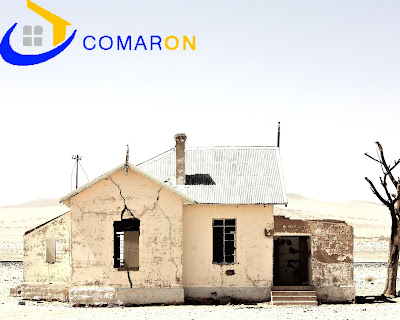Earthquake—a feared natural disaster, man has been trying for centuries to fight this catastrophic act of nature. In spite of being able to erect steel and concrete skyscraper buildings, offering 100% guarantee of the solidity of these buildings against a foremost earthquake has still been a challenge. But then again how exactly does an earthquake affect building structures?
Effect of Earthquake on a building:
There are two main kinds of constructions usually seen in buildings—load-bearing wall buildings and framed buildings. In load-bearing wall construction, the building is constructed with incessant vertical walls to support the floor slabs at diverse levels. Though, if it is functionally troublesome to have non-stop vertical partitions, then the framed edifice is applied wherein isolated vertical posts (columns) are linked with horizontal bands (beams) to support the building.
Both these buildings play the role of enduring the load (weight) of the objects kept on them, similar to the construction of shelves. However imagine a stack of shelves built without joining or joining the horizontal shelves thru the vertical partitions (load bearing type) or thru the vertical posts (frame kind)—i.e. the shelves are just resting on the vertical members, located one above the other—as well as apply a horizontal push to it. The entire shelf can fall like a pack of cards. The consequence of an earthquake is very alike to this horizontal push.
Luckily, present-day technology can exactly determine the forces and stresses that a building can experience. Knowing the forte of the material of which the member is prepared helps in attaining the economy of materials therefore the economy of cost of construction. The entire process is known as structural analysis and design.
The tactic towards the earthquake-resistant design has been to regulate and decrease the degree of harm as it is difficult and wasteful to design for all kinds of earthquake forces which are volatile. The engineers assess the ground acceleration as well as the response of the building structure to its mature detailing of joints of vertical as well as horizontal members of the supporting physical framework. The quality and safety-oriented approach confirm that your home remains a secure place for you as well as your loved ones.
Though engineering standards along with their relationship to seismic activity have been apprehensive for well over a century, noteworthy strides have been made in the latest decades in realizing the forces of earthquakes on buildings. This amplified knowledge has allowed engineers to not only design structures that are additional earthquake resistant, but renew older, present buildings to offer them greater stability in the happening of seismic movement.
How does an earthquake-proof building act:
In order to survive the impacts of an earthquake, a building ought to be able to redistribute the forces that tour through the structures. There are numerous important design features that deliver this permanence:
Diaphragms
A diaphragm is a structural element – characteristically horizontal – that communicates lateral loads to the vertical resisting elements of a building. Samples of diaphragms are on the floors as well as roofs. Earthquake-resistant buildings locate these elements on their own deck and are bound horizontally, letting them share force loads thru vertical elements of the building.
Shear Walls
These vertical design elements are employed to resist in-plane lateral forces. These walls aid to resist the swaying forces of earthquakes by hardening the frame of the building.
Cross-Bracing
A cross-bracing arrangement features diagonal supports which intersect. This can be accomplished by a range of columns, braces, and beams that goal to hand over the seismic loads back to the ground.
Trusses
They are used to add strength where the diaphragms are feeblest. These are commonly diagonal structures that apt into rectangular angles of the frame.
Moment-Resisting Frames
They are a gathering of beams and columns in which those beams are elastic, but are rigidly linked to the columns. The ensuing frame delivers resistance to lateral forces through the springy movement in the columns and beams despite the fact that the joints and connectors remain stiff.
A seismic retrofit makeover brings your building up to the newest enforcement codes. More prominently, a renovation decreases the risk of damage, injury, or death in and around your house when the next quake strikes.
.jpg)





No comments:
Post a Comment